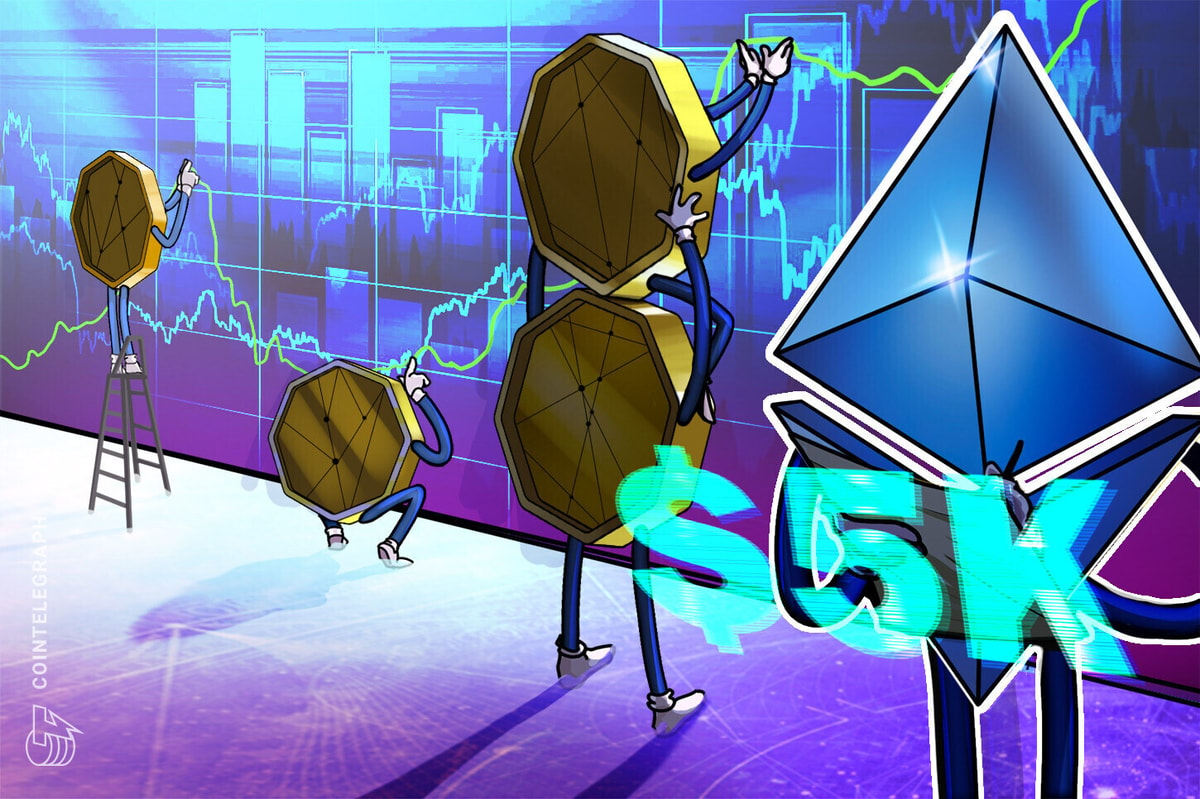Ether (ETH) has ventured above $3,900 on multiple occasions in the past seven days but has been unable to sustain this level. The market seemingly anticipated a boost from the spot Ethereum exchange-traded fund (ETF) approval by the United States Securities and Exchange Commission (SEC), as Ether’s gains occurred on May 21, two days before the decision.
Ethereum spot ETF approval: not everything came out as expected
One could argue that the spot ETF traders are still awaiting the respective Form S-1 approval for each of the funds. Senior Bloomberg ETF analyst Eric Balchunas expects the Ethereum spot instruments to start trading by July 4, while his colleague James Seyffart noted that BlackRock’s updated S-1 on May 29 shows “issuers and SEC are working towards spot Ethereum ETF launches.”
However, analysts hint that ETH could face pressure if the Grayscale Ethereum Trust (ETHE) experiences outflows in the weeks following the conversion to an ETF. A similar issue has plagued Grayscale’s Bitcoin fund (GBTC) due to its high fees. Some speculate that Grayscale ETHE outflows alone could exceed $100 million per day in the initial weeks, thereby offsetting or even surpassing any inflows from newcomers.
In essence, part of Ether’s failure to break the $3,900 resistance comes from the rally that preceded the spot ETF approval. The fact that some investors are disappointed that effective trading will take longer has also created some uncertainty and negative price impact. This could spell trouble as Ether’s futures open interest rose to its highest level ever on May 28.
$16.8 billion in Ether futures poses liquidation risks
The open interest gauges the total number of ETH futures contracts available on every derivatives exchange, including Binance, CME, OKX, and Bybit.

Although ETH futures longs (buyers) and shorts (sellers) are matched at all times, a higher notional in play means the risk of liquidations grows exponentially. For example, if longs are using 10x leverage, on average, those contracts will be forcefully liquidated if Ether’s price drops 10%.
A similar opposite movement can happen if Ether’s price suddenly rallies 10% and shorts are the ones using excessive leverage. In such cases, the exchanges will automatically buy ETH futures to eliminate their risk and close the positions lacking the respective margin deposits. Consequently, Ether’s futures $16.8 billion open interest poses a risk for potential buyers, keeping the ETH price below $3,900.
Competing networks outpaced Ethereum’s activity growth
Ethereum's high gas fees might be seen as a sign of success, indicating continuous demand for block space. However, they also offer an opportunity for competing blockchains that focus on high scalability. Part of the activity has migrated to Ethereum layer-2 solutions, but some users and projects are opting for BNB Chain, Solana, or Aptos.

It would be naive to assume that every decentralized application (DApp) requires the level of decentralization that Ethereum provides. Users engaging with simple finance, gambling, or games are often unwilling to use bridge solutions to access a lower-fee environment. Thus, Ethereum mainnet volume growth falling behind its competitors is generally seen as a missed opportunity.
Related: Ethereum ETFs to be Web3 growth ‘call option’ — Crypto analyst
Ethereum’s 122,350 daily active addresses engaging with DApps (UAW) declined by 2% on May 30 compared to the previous day. Similarly, the total volume transacted on the Ethereum network increased by a meager 2% during the same period. This data shows that despite Ethereum’s strong fundamentals, multiple DApp use cases, and diverse investor profiles, there is a tendency to adopt alternative blockchains.
For example, BNB Chain's 508,610 daily active addresses are more than four times higher than Ethereum's. These users transacted over $3.5 billion on PancakeSwap in the past seven days, while a single DApp, Move Stake, gathered over 226,350 active addresses in the same period. In short, Ethereum's on-chain metrics do not inspire confidence, further limiting Ether’s potential to break above $3,900 in the near term.
This article is for general information purposes and is not intended to be and should not be taken as legal or investment advice. The views, thoughts, and opinions expressed here are the author’s alone and do not necessarily reflect or represent the views and opinions of Cointelegraph.










